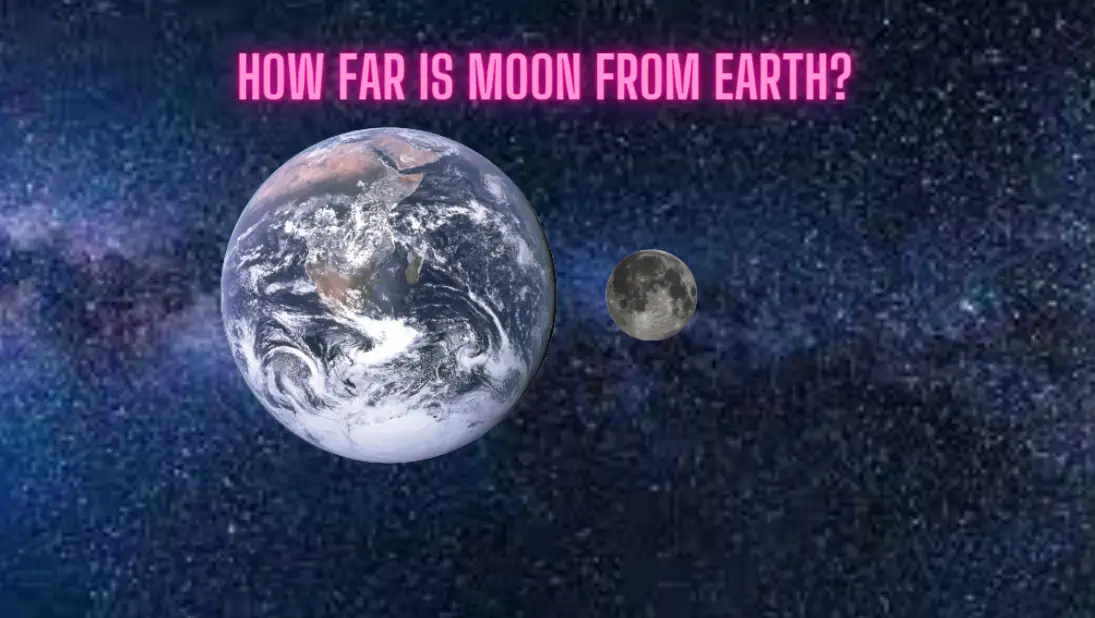Since the beginning of human history, people have been captivated by the Moon, which is the only natural satellite the Earth has. It has been a wellspring of ideas, awe, and the desire to learn more about the world around us. The inquiry “How far is the Moon from Earth?” is consistently one of the first inquiries that people ask. This question, which may seem straightforward at first glance, is actually rather important in gaining a knowledge of our planetary neighbor and the complex interactions that take place between Earth and the Moon.
Let’s begin by establishing some fundamental numbers, shall we? There are approximately 384,400 kilometers (238,900 miles) that separate the Earth and the Moon from one another on average. The distance between the centers of the Earth and the Moon is known as the Earth-Moon center-to-center distance. This distance is measured from the center of the Earth to the center of the Moon. This number, however, is not set in stone and is subject to change depending on a variety of factors.
The Moon’s orbit around Earth has the shape of an ellipse, which is one of the key factors that contributes to this volatility. Since the Moon’s orbit is not a perfect circle but rather an ellipse, the Moon’s distance from Earth varies throughout the course of its journey around the Earth. It is possible for the Moon to be as close to Earth as 363,300 kilometers (225,622 miles) when it is in its closest orbit, which is called perigee. On the other hand, it is possible for it to be nearly 405,500 kilometers (251,902 miles) away when it is at its most distant point, which is known as its apogee.
It has been determined that an average distance of 384,400 kilometers (238,900 miles), which was described earlier, is the best approximation for the distance between the Earth and the Moon. It is a valuable reference point for general computations and conversations relating to research and exploration of the moon. Furthermore, this average distance is vital for understanding many elements of our interaction with the Moon, such as the effect of lunar gravity on Earth’s tides, space missions, and satellite communications.
The question now is, how can we calculate how far away the Moon is? Researchers utilize a wide variety of methodologies to obtain accurate measurements, with the Apollo missions providing one of the most important contributions to the advancement of lunar distance computations. Retroreflectors were placed on the surface of the Moon by astronauts during the Apollo 11 mission and later missions. These devices, known as retroreflectors, are essentially arrays of specialized mirrors that are designed to reflect light back in the opposite direction from which it originated. Scientists are able to precisely measure the amount of time it takes for a laser beam to bounce back to Earth when they fire lasers at retroreflectors from the surface of the planet. They are able to determine the distance to the Moon with an incredible degree of precision using this technology.
In addition to the use of laser ranging, other approaches, including as radar measurements and satellite telemetry, are also applied in order to establish the distance between Earth and the Moon. These methodologies offer data that complement one another and contribute to our progress toward a better comprehension of the Earth-Moon system.
The Moon’s distance from Earth is not only fascinating from an astronomical standpoint, but it is also essential for space exploration and other scientific activities that are now being pursued. It gives us the ability to plan and carry out trips to our lunar friend, investigate its surface in great detail, and learn more about the origins and development of both the Moon and Earth.
In conclusion, the distance between the Earth and the Moon is roughly 384,400 kilometers, which is equal to 238.900 miles. However, because the Moon travels in an elliptical orbit, this distance can change from its closest position of roughly 363,300 kilometers (225,622 miles) to its farthest point of around 405,500 kilometers (251,909 miles). The closest point of this distance is approximately 363,300 kilometers (225,622 miles). To get a more in-depth knowledge of the Moon, which is Earth’s closest celestial companion, scientists employ a number of techniques, including as laser range and radar studies, to correctly establish the Moon’s distance from the planet.
![]()
